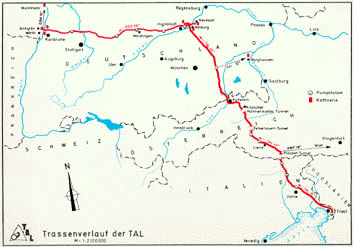Commissioned 1967 | Type oil Length 752 km (467 mi) | |
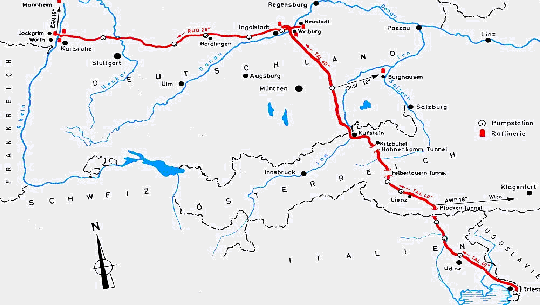 | ||
Maximum discharge 43 million tons per year Operator The Transalpine Pipeline Company Similar Adria–Wien Pipeline, Gailberg Saddle, Baltic Pipeline System, Odessa–Brody pipeline, Burgas–Alexandroupoli pipeline | ||
Tal transalpine pipeline
The Transalpine Pipeline (TAL) is a crude oil pipeline, which connects Italy, Austria and Germany.
Contents
- Tal transalpine pipeline
- The transalpine pipeline
- History
- Route
- Technical features
- Pipeline company
- References
The transalpine pipeline
History
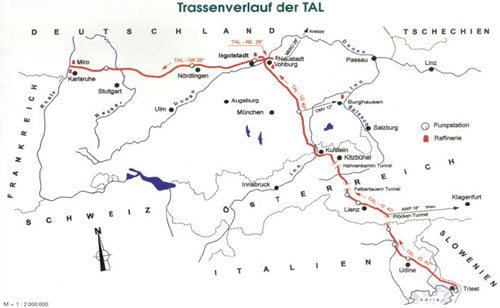
The feasibility study of the pipeline was carried out by Bechtel in 1963. The pipeline was commissioned in 1967. This time, the construction cost around US$ 192 million.
Route
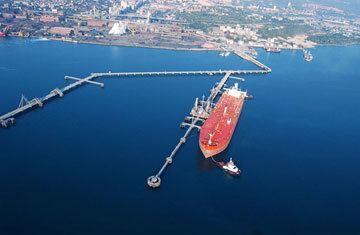
The pipeline starts from the marine terminal in Trieste. From Trieste, the 465 kilometres (289 mi) long pipeline runs through the Alps to Ingolstadt. From Ingolstadt 21 kilometres (13 mi) long pipeline runs to Neustadt an der Donau and 266 kilometres (165 mi) long pipeline runs to Karlsruhe. In Vohburg, the Transalpine Pipeline is connected with the Ingolstadt-Kralupy-Litvínov pipeline, which supplies oil refineries in the Czech Republic. It could be used to reverse the southern branch of the Druzhba pipeline to supply Slovakia.

In Würmlach, Austria, the Adria-Wien Pipeline (AWP) branches off from the Transalpine Pipeline. It supplies the OMV refinery in Schwechat. Through the proposed Bratislava - Schwechat Pipeline it may supply also Slovakia.
In addition to the sea transport, the Pan-European Pipeline, if constructed, will supply the Transalpine Pipeline.
Technical features
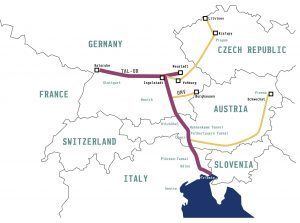
The diameter of the trunkline between Trieste and Ingolstadt is 40 inches (1,020 mm). Both sections starting from Ingolstadt are with 26 inches (660 mm) in diameter. The pipeline has ten pumping stations. The pipeline system includes tank farms in Trieste and Lenting, Germany. The capacity of the pipeline is approximately 43 million tons of crude oil per year. In 2012 the throughput of the pipeline was 34.9 million tons of crude oil.
Pipeline company
The pipeline is owned by the consortium of eight oil companies. The current shareholders are:
The Czech unit of PKN Orlen, Unipetrol, is negotiating to buy an about 2% in the pipeline.

